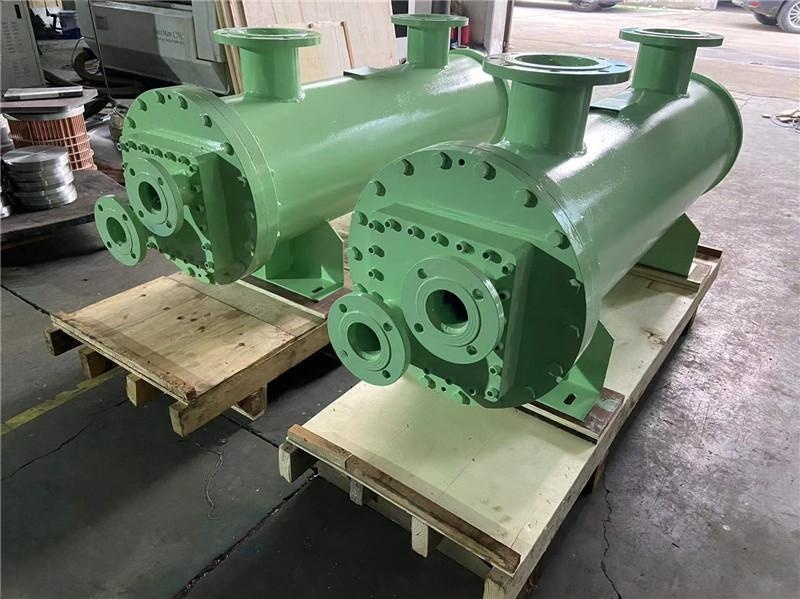An air-cooled oil cooler is a heat exchanger designed to reduce the temperature of oil (engine oil, hydraulic oil, or transmission oil) using ambient air as the cooling medium. It is commonly used in automotive, industrial, and aerospace applications where liquid cooling is impractical.
Working Principle:
- Hot Oil Inlet
- The hot oil from the engine or hydraulic system enters the cooler through an inlet port.
- The oil temperature typically ranges between 70°C to 120°C, depending on the application.
- Heat Transfer Through Fins & Tubes
- The oil flows through a network of finned tubes or cooling plates inside the heat exchanger.
- The fins increase the surface area for better heat dissipation.
- The heat from the oil is transferred to the cooler’s metal walls (usually aluminum or copper for high thermal conductivity).
- Airflow Over the Cooler
- Ambient air is forced over the fins and tubes by either:
- Natural airflow (in passive systems, relying on vehicle motion or convection).
- Forced airflow (using an electric fan or engine-driven fan in active systems).
- The air absorbs heat from the fins and carries it away, cooling the oil.
- Ambient air is forced over the fins and tubes by either:
- Cooled Oil Outlet
- After heat exchange, the cooled oil exits the heat exchanger at a lower temperature (typically 10-30°C cooler than the inlet).
- The oil returns to the engine or hydraulic system to maintain optimal viscosity and lubrication.
Key Components:
- Finned Tubes/Plates: Enhance heat transfer efficiency.
- Cooling Fan (if applicable): Increases airflow for better cooling.
- Mounting Brackets: Secure the cooler in place (often near radiators or in airflow paths).
- Inlet/Outlet Ports: Connect to the oil circulation system.
Advantages:
◉ No need for additional coolant (unlike liquid-cooled oil coolers).
◉ Lightweight and simple design.
◉ Low maintenance (no risk of coolant leaks).
Disadvantages:
◉ Less efficient than liquid-cooled systems in high-temperature environments.
◉ Dependent on ambient air temperature and airflow.
Applications:
- Automotive: Engine oil cooling in cars, trucks, and motorcycles.
- Industrial Machinery: Hydraulic systems in construction equipment.
- Aviation: Lubrication oil cooling in aircraft engines.
Efficiency Factors:
- Airflow Rate (higher airflow = better cooling).
- Fin Density (more fins = larger cooling surface).
- Oil Flow Rate (slower flow allows more cooling time).
Ambient Temperature (hotter air reduces cooling efficiency).
